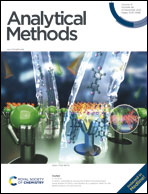Fast and quantitative analysis of level 3 details for latent fingerprints
Abstract
Level 3 details play essential roles in practical latent fingerprint (LFP) identification. To reliably extract reproducible and identifiable level 3 features, high-resolution images of fingerprints with adequate quality are required. Conventional methods for acquiring level 3 details often involve specific pretreatment, intricate peripheral, leading to time-consuming analysis. Herein, we simply used water to develop the sebaceous LFPs deposited on nitrocellulose (NC) membranes with only one step, and then the high-resolution (2048 pixels per inch) optical micrographs were captured to reflect the live fingertip with high fidelity. From the pictures, level 3 features, including all dimensional attributes of the ridges and pores such as number, size, location, shape, and edge contour can be extracted accurately and reproducibly. Among them, qualitative features (the structures of ridge edges) and several quantitative characteristics (the number and the relative location of sweat pores) exhibit good reproducibility. Remarkably, we proposed a new parameter termed “frequency distribution of the distance between adjacent sweat pores”, short form “FDDasp”, which was further proved highly identifiable in different individuals, enabling the successful distinguishment between two fragmentary fingerprints with similar level 2 structures. We believe that this methodology provides a fast and quantitative analytical paradigm for latent fingerprint identification at level 3 details.

- This article is part of the themed collection: Analytical Methods HOT Articles 2021


 Please wait while we load your content...
Please wait while we load your content...